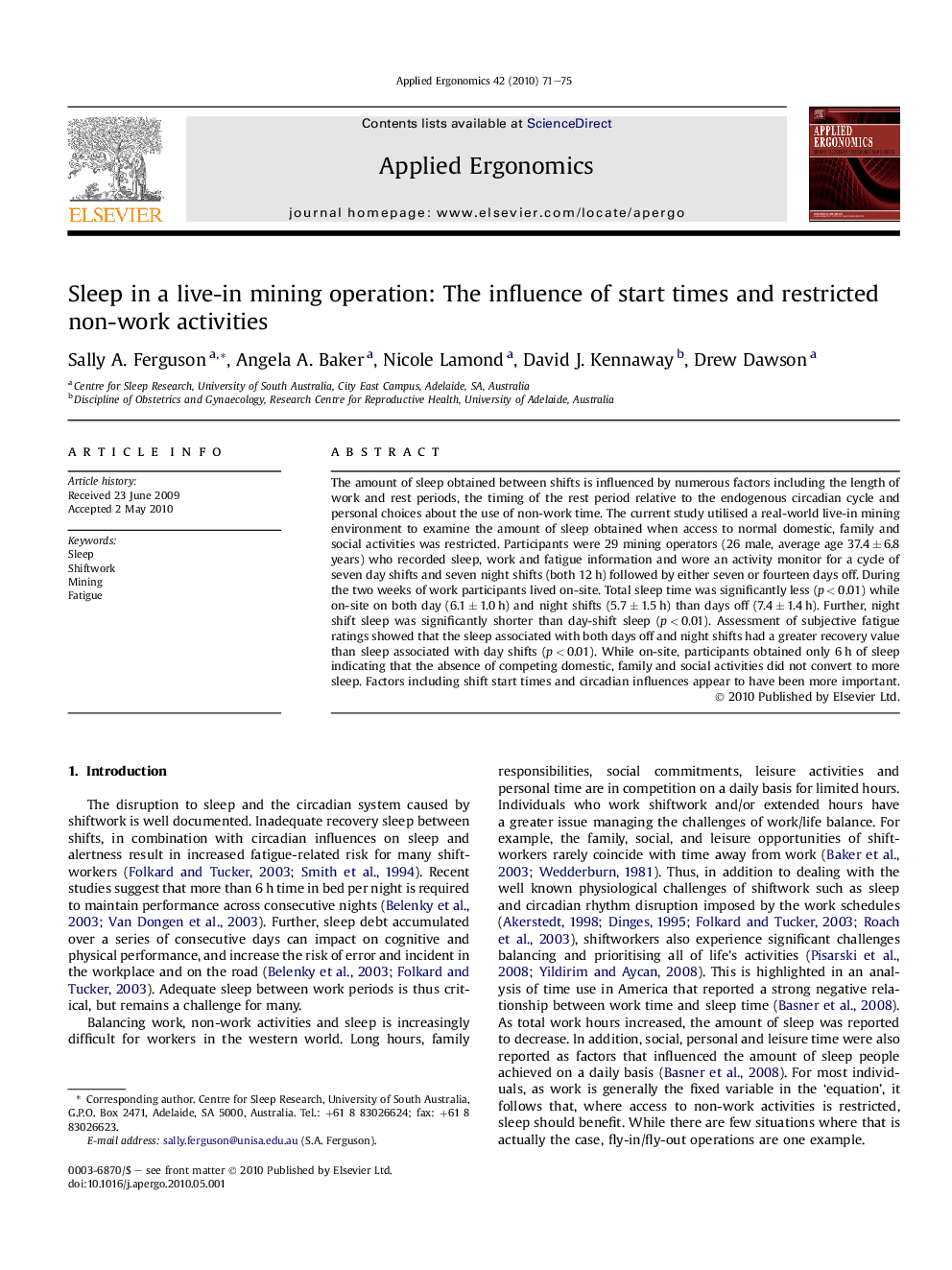| Article ID | Journal | Published Year | Pages | File Type |
|---|---|---|---|---|
| 551268 | Applied Ergonomics | 2010 | 5 Pages |
The amount of sleep obtained between shifts is influenced by numerous factors including the length of work and rest periods, the timing of the rest period relative to the endogenous circadian cycle and personal choices about the use of non-work time. The current study utilised a real-world live-in mining environment to examine the amount of sleep obtained when access to normal domestic, family and social activities was restricted. Participants were 29 mining operators (26 male, average age 37.4 ± 6.8 years) who recorded sleep, work and fatigue information and wore an activity monitor for a cycle of seven day shifts and seven night shifts (both 12 h) followed by either seven or fourteen days off. During the two weeks of work participants lived on-site. Total sleep time was significantly less (p < 0.01) while on-site on both day (6.1 ± 1.0 h) and night shifts (5.7 ± 1.5 h) than days off (7.4 ± 1.4 h). Further, night shift sleep was significantly shorter than day-shift sleep (p < 0.01). Assessment of subjective fatigue ratings showed that the sleep associated with both days off and night shifts had a greater recovery value than sleep associated with day shifts (p < 0.01). While on-site, participants obtained only 6 h of sleep indicating that the absence of competing domestic, family and social activities did not convert to more sleep. Factors including shift start times and circadian influences appear to have been more important.
